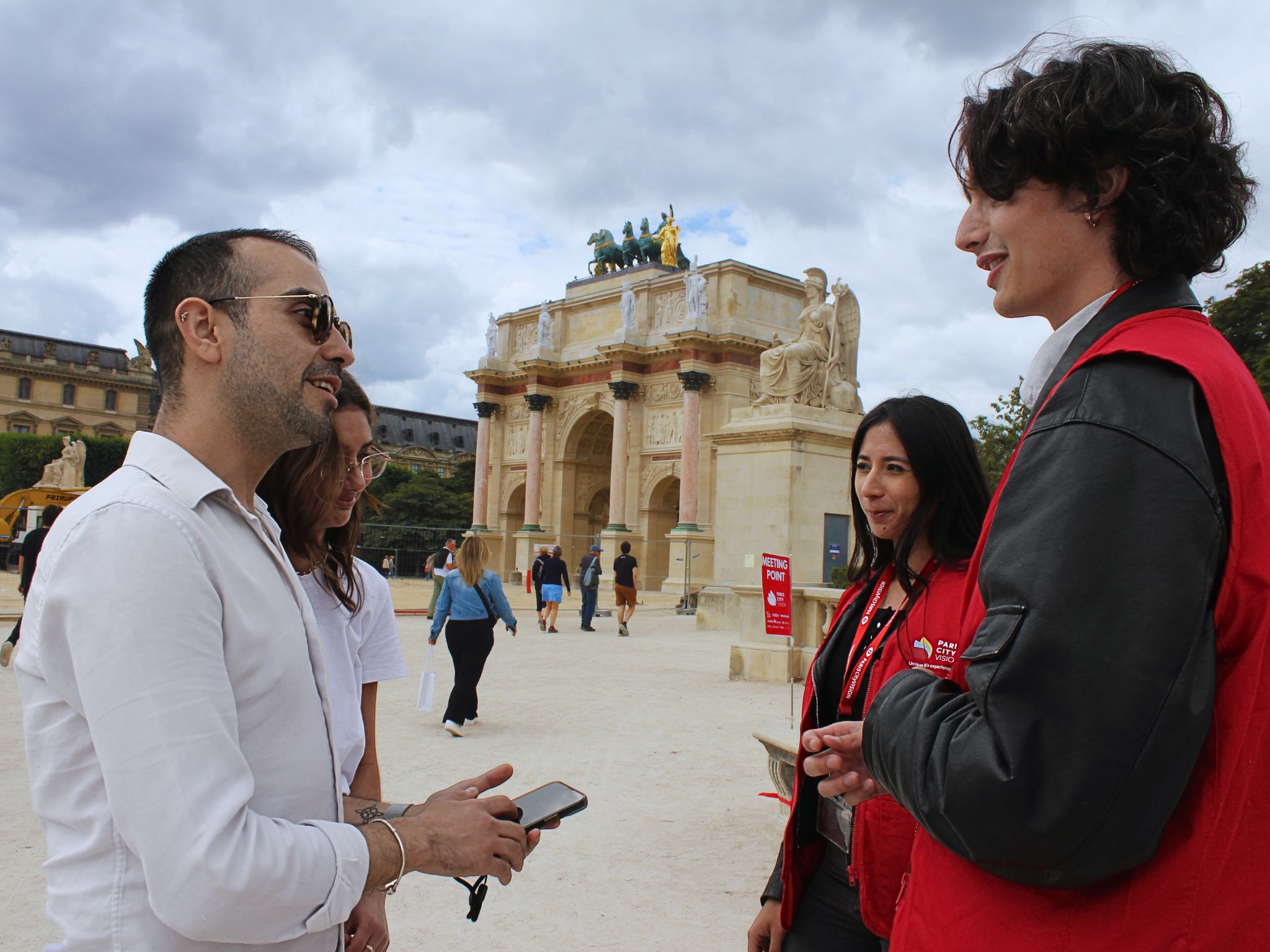Louvre Palace : from castle to museum

The Louvre Palace is a building that has served several purposes, from fortress to national museum. How was this transformation achieved? When did the Louvre Palace become a museum? Who built the Palace ? Here are all the answers :
The Louvre in the Middle Ages
Archaeological digs have revealed the presence of hunter-gatherers in the area of the Louvre. The Parisian basin was therefore already busy. This geographical area quickly became the capital. In the Middle Ages, King Philippe-Auguste (1165-1223) built a fortress there, made up of a keep and a square enclosure. The purpose of this military stronghold was to reinforce the wall constructed at the time to protect Paris. The ditches of these fortifications are now visible in the Carrousel du Louvre mall.
The work of Charles the Wise
Between 1364 and 1380, Charles V (1338-1380) undertook work on the Louvre to transform it into a castle. This project was backed by the architect Raymond du Temple. The old fort became a comfortable residence consisting of apartments and dedicated leisure areas. A king’s library was set up, and this collection would, over the centuries, become the National Library of France. Unfortunately, wars, including the Hundred Years War, and the ambition of noblemen to get away from Paris, made them abandon the Louvre in favor of the Chateaus of the Loire Valley.
François I and the New Louvre Palace
François I (1494-1547) is known as the sovereign of the Renaissance. It was during his time that the Loire Chateaus were developed and France learned of Leonardo da Vinci and his Mona Lisa. At that time, the Louvre Palace begun by Charles V was demolished and rebuilt. Reception areas were set up to exercise power. Catherine de Medici (1519-1589) also had Tuileries Palace built. Then came King Henri IV (1553-1610), who had a large gallery built between the Louvre Palace and Tuileries Palace to move between the seat of power and his apartments. Modernization work began on the Louvre, but it would only be completed during the reign of his grandson Louis XIV. Louis XIV then entrusted development of the gardens to André Le Nôtre, before moving on to projects at Versailles.
The beginnings of the Louvre Museum
While the court of the Sun King was at Versailles, the Louvre Palace was occupied by noblemen, intellectuals and artists who took up residence there. These suggested the idea of a museum to the king. Louis XVI loved the idea and work began. The French Revolution precipitated the opening of the Grand Gallery to the public. The works of the royal collections were exhibited there. The collections grew as a result of confiscations and military successes. Private donations also provided the Louvre with the opportunity to acquire new pieces. While Napoleon Bonaparte (1769-1821) lived in Tuileries Palace, the Emperor made the Louvre into a large museum with help from its first director, Dominique Vivant Denon (1747-1825). Denon was responsible for organizing the collections. Later, Charles X (1757-1836) had a new gallery built along Rivoli, parallel to the one constructed by Henri IV. The Departments of Greek and Egyptian Antiquities were established under the name of the Charles X Museum. It was during the Second Empire that the Louvre acquired the silhouette we know today. Two buildings were built around the Napoleon courtyard where the Pyramid stands today. New rooms were developed for the museum, and the Louvre also has ministerial offices and stables. The work extended as far as the Tuileries that Napoleon III wanted to renovate, with destruction of the gallery along the Seine to begin with. Unfortunately, this project never got under way due to events in the city during which Tuileries Palace burned down.
The Grand Louvre
In 1981, François Mitterrand was elected President of the French Republic. Redevelopment and renovation of the Louvre Palace were entrusted to the architect Ieoh Ming Pei. These works led, amongst other things, to the construction of the pyramids, as well as the extension of the main entrance with Carrousel du Louvre. The largest museum in the world opened to new audiences. The most extensive work on the Louvre involved the redevelopment of the Cour Visconti to create the Department of Islamic Arts.
In 2014, the Louvre Museum welcomed more than 9 million visitors, three-quarters of whom were foreigners. This success makes the Louvre palace one of the most visited in Paris.


